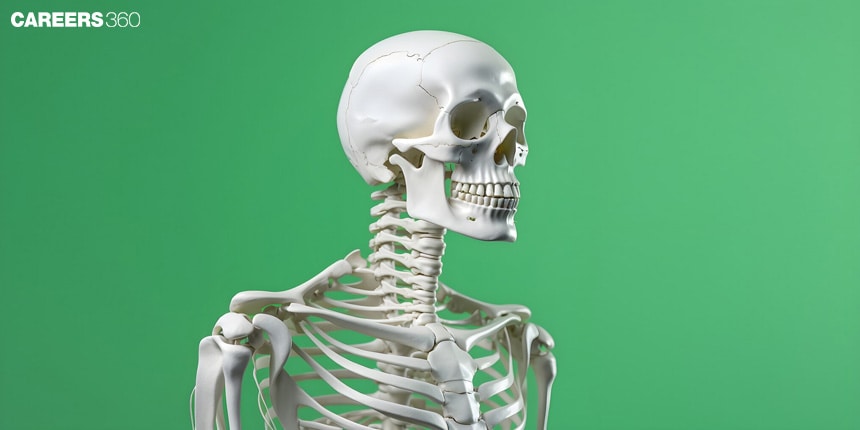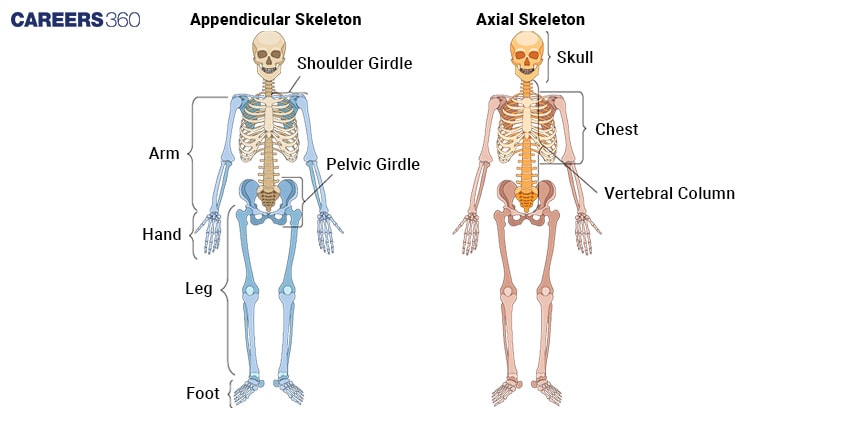Appendicular Skeleton System: Definition, Function, Anatomy
What Is Appendicular Skeleton System?
The overall functions of the human skeletal system are to provide structure, and protection to organs and to act as a means of motion. The skeleton is mainly divided into the skeletal part itself, as in, the appendicular skeleton and axial skeleton; the axial is the portion that forms the central portion of the framework of the body. This paper hence looks at the appendicular skeleton in terms of its structure and the functions or the role played in providing movement to the body in its day-to-day activities.
NEET 2025: Mock Test Series | Syllabus | High Scoring Topics | PYQs
NEET Important PYQ's Subject wise: Physics | Chemistry | Biology
New: Meet Careers360 B.Tech/NEET Experts in your City | Book your Seat now
- What Is Appendicular Skeleton System?
- Structure Of The Appendicular Skeleton
- Upper Limb Bones
- Lower Limb Bones
- Conclusion


Structure Of The Appendicular Skeleton
The appendicular skeleton includes the upper and lower limbs with their girdles. It is composed of 126 bones that render mobility and dexterity to the body in accomplishing normal daily activities.
Upper Limb Bones
The upper limb bones are listed below-
Bones Of The Shoulder (Pectoral Girdle)
The pectoral girdle is formed by the clavicle and scapula, which attach the upper limbs to the trunk and support the movements of the arm.
Bones Of The Arm And Forearm
The humerus, radius, and ulna of the arm and forearm supply a basis for a wide range of motion, which includes flexion and rotation of the forearm.
Bones Of The Hand
Carpal and metacarpal bones, along with phalanges or finger bones, compose the framework and agility for grasping and manipulating food.
Lower Limb Bones
The lower limb bones are listed below-
Bones Of The Pelvic Girdle:
The hip bones are called the ilium, ischium, and pubis, and the sacrum makes for the pelvic girdle. This structure supports the weight of the body and connects or attaches the lower limbs to the axial skeleton.
Bones Of The Thigh And Leg
The femur or the thigh bone, patella or the kneecap, and the tibia and fibula are the underlying bones for motion and weight-bearing activities of the thigh and leg.
Bones Of The Foot
Tarsals, metatarsals, and phalanges are the stabilizing, balancing, and propelling structures of walking and running.
Conclusion
The main function of the appendicular skeleton is to provide allowance for movement. This is possible because of attachment to muscles that aid a person to move his or her hands, arms, feet, and legs inconspicuously subordinate to unconscious activity. Of very significant importance also, the appendicular skeleton carries an individual's body weight as well as purpose balance.
Frequently Asked Questions (FAQs)
Appendicular Skeleton: The appendicular skeleton is constituted by the bones of the limbs and their connecting girdles, namely the pectoral and pelvic. It enables movement while at the same time supporting the body weight.
The appendicular skeleton is related to the motion and anchoring of muscles controlling the arms, hands, legs, and feet.
The appendicular skeleton involved in everyday activities is from easy simple writing on a board or walking to very complex gymnastics and various sports and dance forms, proving their vital role in the activities of daily life.
Injuries sometimes result in fractures, dislocations, and sprains that often need some form of medical intervention to return to function and mobility.
Also Read
30 Nov'24 06:17 PM
28 Nov'24 05:27 PM
28 Nov'24 04:14 PM
28 Nov'24 03:07 PM
28 Nov'24 03:06 PM
28 Nov'24 01:21 PM
28 Nov'24 12:16 PM